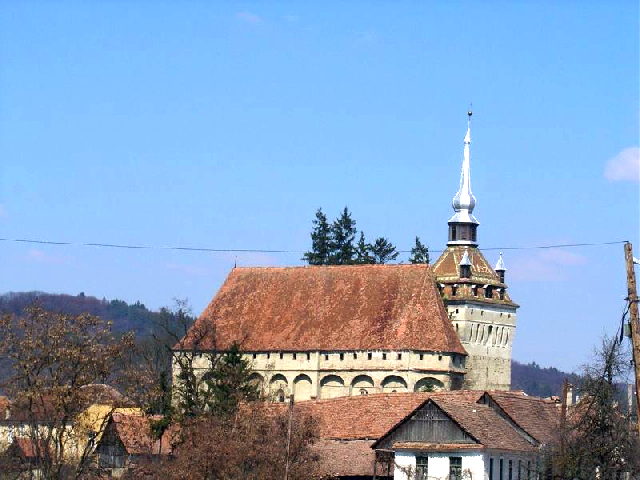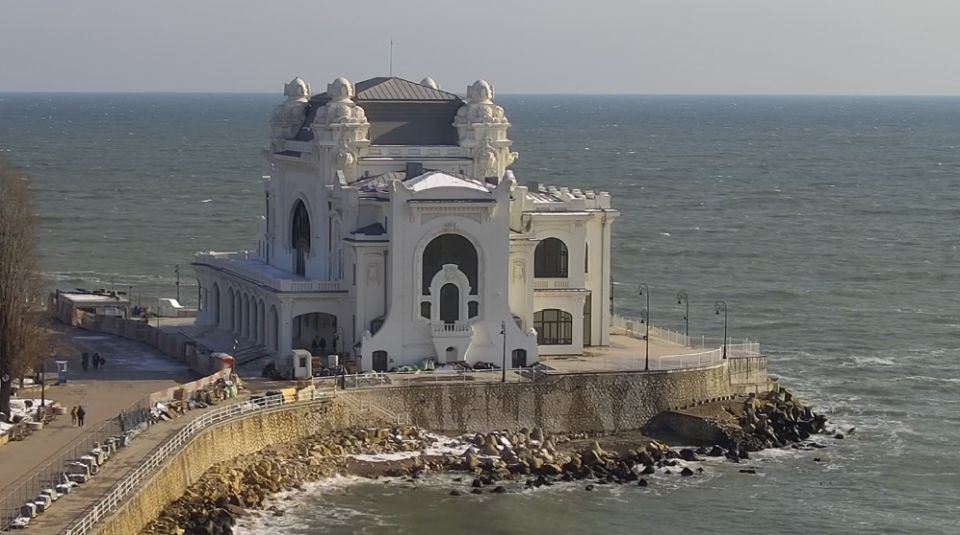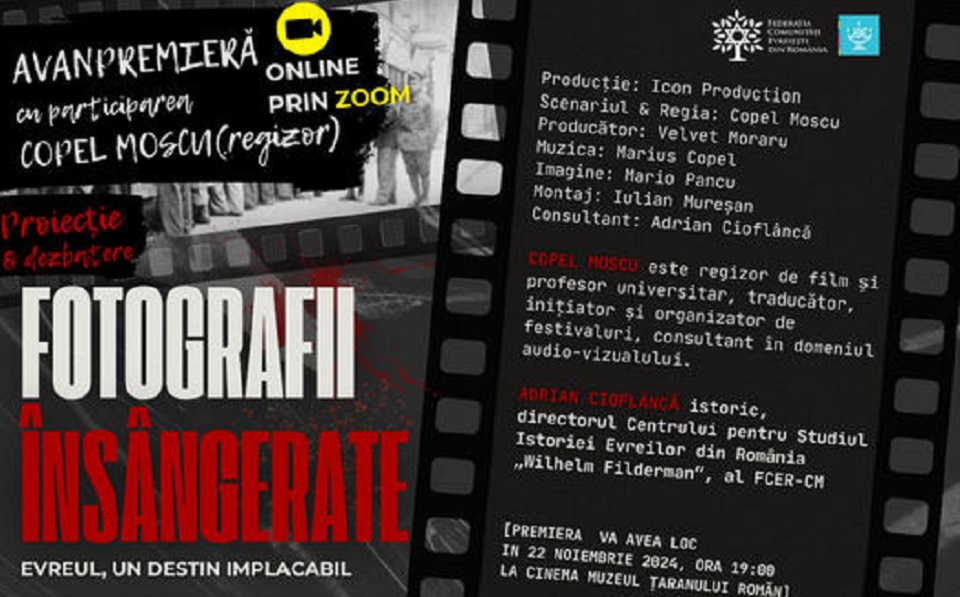The fortified church and the peasant stronghold of Saschiz
Saschiz, in central Romania, distinguished itself through two features typical of Saxon settlements in Transylvania: the fortified church and the peasant stronghold.

România Internațional, 13.09.2014, 12:37
Saschiz, located in the centre of Romania, was inhabited at first by Szeklers and then by Saxons. It distinguished itself through 2 features typical of Saxon settlements in Transylvania: the fortified church and the peasant stronghold. The church, located in the city centre is one of the biggest and most impressive Saxon places of worship. Today, it can be admired in its original state, being almost unaltered. Saint Stephen is the patron saint, and the church has 22 buttresses and, as expected, it took a long time to build. Alin Pora, historian and co-author of “A monograph of Saschiz ”, tells us more.
“The construction works began in 1945 and ended in 1525. In order to build this edifice the intervention of the Saxon Community in Sibiu was required and the documents showing how the money was sent from Sibiu were kept. From an architectural standpoint, the church is built in a late Gothic style with a starred arch. A unique element in this church’s construction is the creation of a place, above the arch, from where archers would defend the community in case of an attack. Initially, the fortified church had another fortified wall that was destroyed with time and was never rebuilt. The reason for this was that, shortly after the church was built, so was the peasant stronghold in Saschiz, which served both as a residence and as a storage space for provisions in times of peace. In times of war, the villagers would take cover in the stronghold.”
Recent archaeological findings show that, despite previous suspicions, St. Stephen’s Church was not built on top of an older basilica. As a consequence, its size and facets are the same today as when the church was originally built. In 1677, the main tower was expanded, having as model the clock tower from Sighisoara, a rival town for Saschiz in the Middle Ages. Therefore, the tower is large and big and it has a clock at its top, as well as a statue commonly known as Bogdan, which rings a warning sound every 15 minutes. The warnings referred to attacks from the Tatars, which was the main reason why the stronghold was built. Alin Pora tells us more:
“The peasant stronghold was built for defence purposes. The legend says that villagers from 7 villages took part in the construction and you could not pass through Saschiz unless you put some effort into the construction. For instance, merchants who would pass with their carts had to unload their merchandise at the end of the village, fill their carts with rocks and go up to the stronghold, and only after that could they pass through Saschiz. The stronghold dates from around the same time as the church. It had seven towers, one of them being the school tower, built as a token of the Saxons’ respect for education. The stronghold is on a hill, north of the church and tower.”
Apart from the school tower, the peasant stronghold of Saschiz had other towers, such as the gate tower, the princes’ tower on the north side, the priests’ tower and the ammunition tower. However, none of these can be seen today because the stronghold was never rehabilitated and it was abandoned during the communist period. If it is to be renovated, the City Hall must first get European funds. If rehabilitated, the stronghold of Saschiz would definitely attract as many tourists as the ones in Rupea or Rasnov.





























